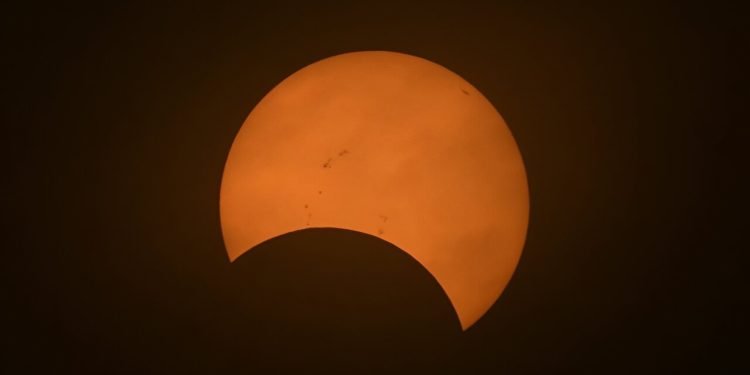Skywatchers across South America were treated to a rare celestial event—a mesmerizing annular solar eclipse, often referred to as the “ring of fire.” The spectacle began its journey in the skies over Easter Island in Chile before making its way to the stunning landscapes of Patagonia, leaving onlookers in awe.
On Wednesday, the moon passed directly between Earth and the sun, creating the illusion that a glowing ring surrounded the darkened sun. Unlike a total solar eclipse, the moon in this case is farther away from Earth, meaning it does not entirely block out the sun. Instead, a fiery, ring-like glow forms, captivating viewers in its unique beauty.
This particular event drew the attention of astronomy enthusiasts, photographers, and tourists alike. On Easter Island, a remote destination in the Pacific Ocean known for its iconic moai statues, people gathered under a partly cloudy sky to witness the phenomenon. Against the backdrop of these ancient stone figures, visitors marveled at what many described as an unforgettable moment.
Ninoska Huki, a 55-year-old local resident, expressed her amazement, likening the eclipse to “a mini sunset.” She described the experience as “sublime,” with the island’s eerie transformation occurring shortly after noon.
How the ‘Ring of Fire’ Forms
An annular solar eclipse happens when the Earth, moon, and sun are perfectly aligned. However, due to the moon’s distance from Earth, it appears slightly smaller in the sky, leaving the outer edges of the sun visible as a luminous ring. The process begins as the moon takes a bite out of the sun, gradually covering more of its surface. As the alignment reaches its peak, viewers typically notice a sudden drop in temperature and daylight, with some even reporting a shift in animal behavior, as birds and creatures believe nightfall is imminent.
The peak moment of the eclipse, when the “ring of fire” was most prominent, lasted about six minutes. This stunning event began in the North Pacific Ocean, continued across the Andes mountains, and passed through the Patagonia region of South America, lasting over three hours.
In the small Patagonian town of Puerto San Julian, residents braved chilly winds to witness the cosmic event from the beachside. Many gathered with telescopes and special glasses, eager to take part in this once-in-a-lifetime experience. Julio Fernandez, a retired teacher, brought his telescope to share the experience with local children, emphasizing the rarity of such an event.
In this remote town, schools even suspended classes, allowing students to enjoy the eclipse firsthand—a moment they will likely remember for years to come.
Experts remind eclipse-watchers that it’s crucial to use proper eye protection, such as certified eclipse glasses, to view the “ring of fire” safely. Alternatively, creating a simple pinhole projector allows people to observe the eclipse indirectly by projecting the sun’s image onto another surface.
According to NASA, the next partial solar eclipse will occur on March 29, 2025, and will be visible primarily from western North America, Europe, and parts of northwest Africa











